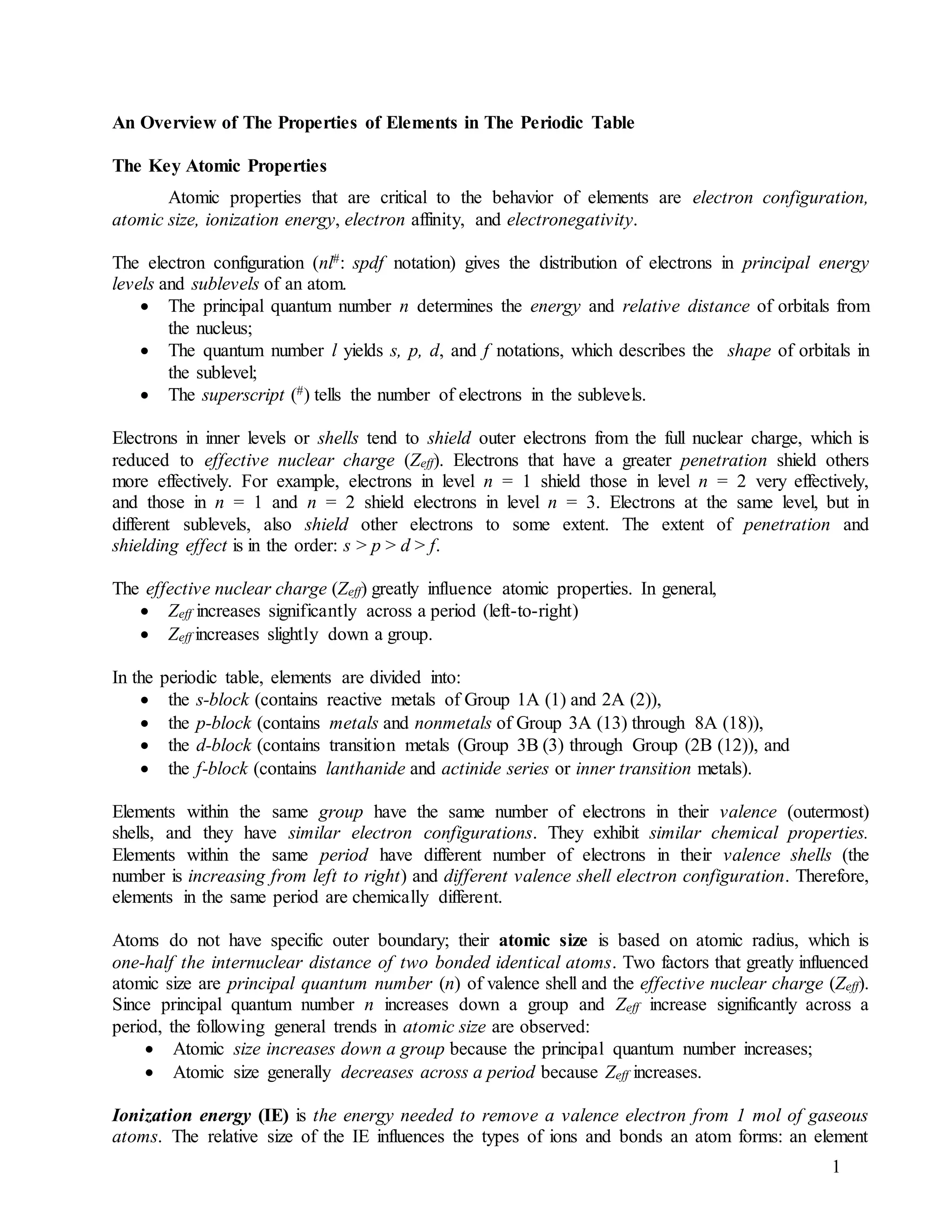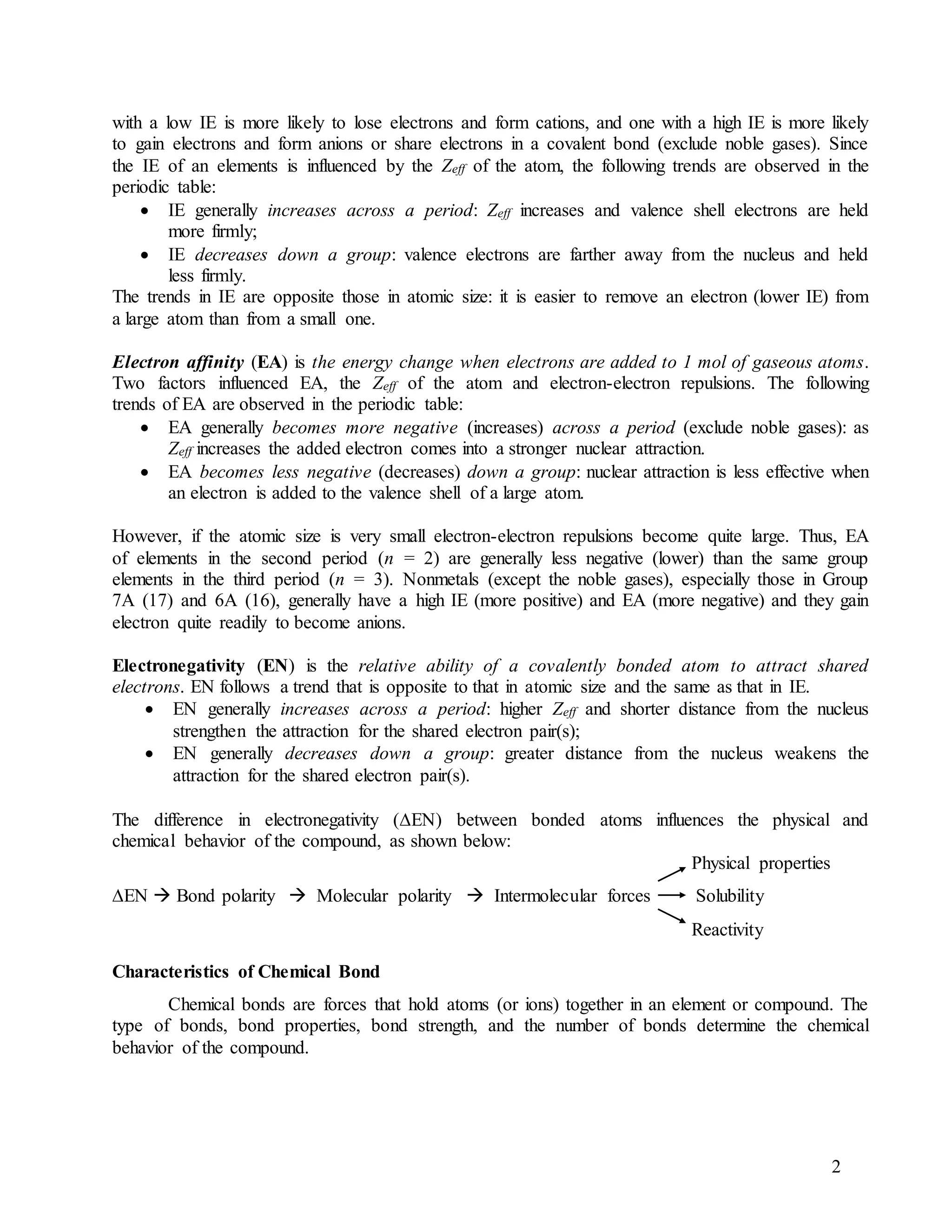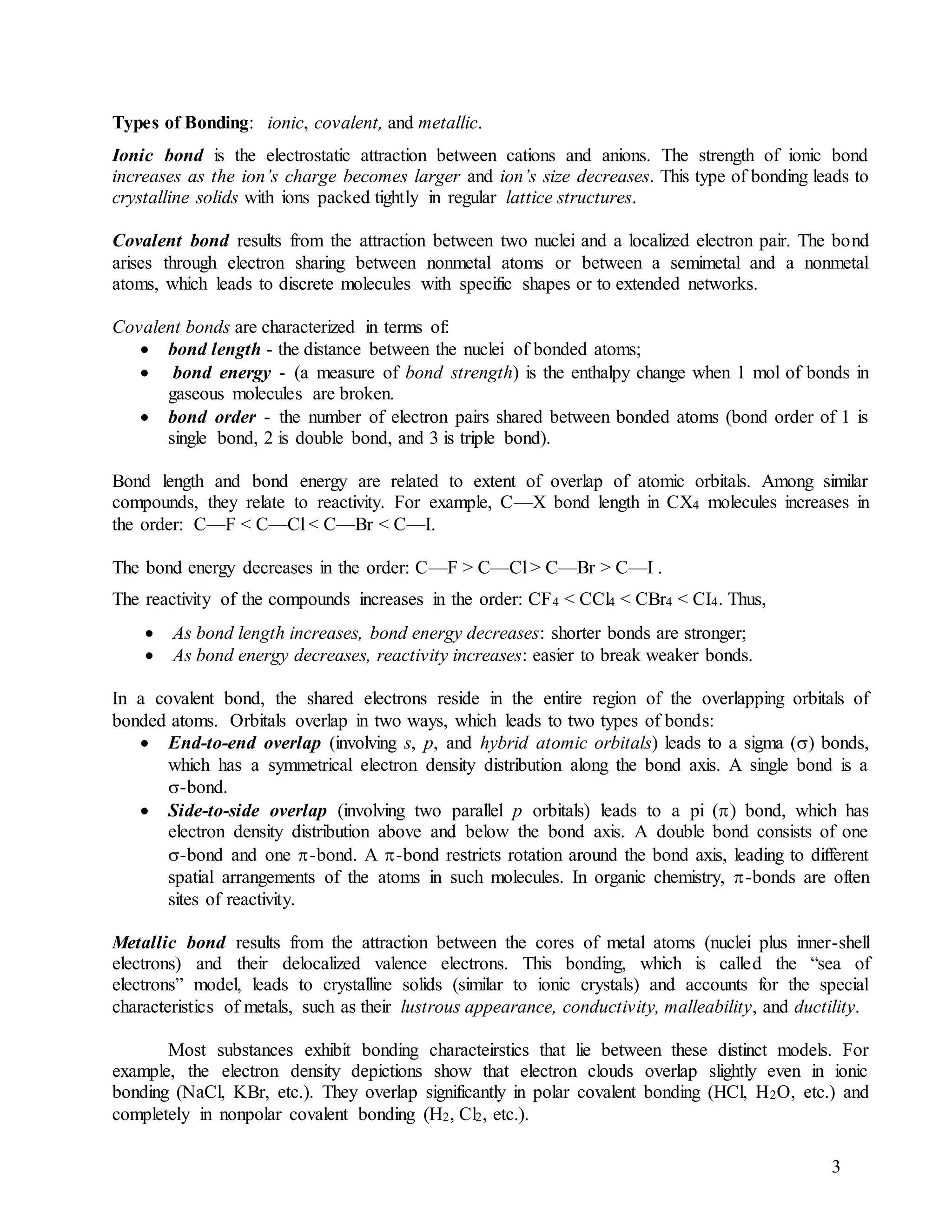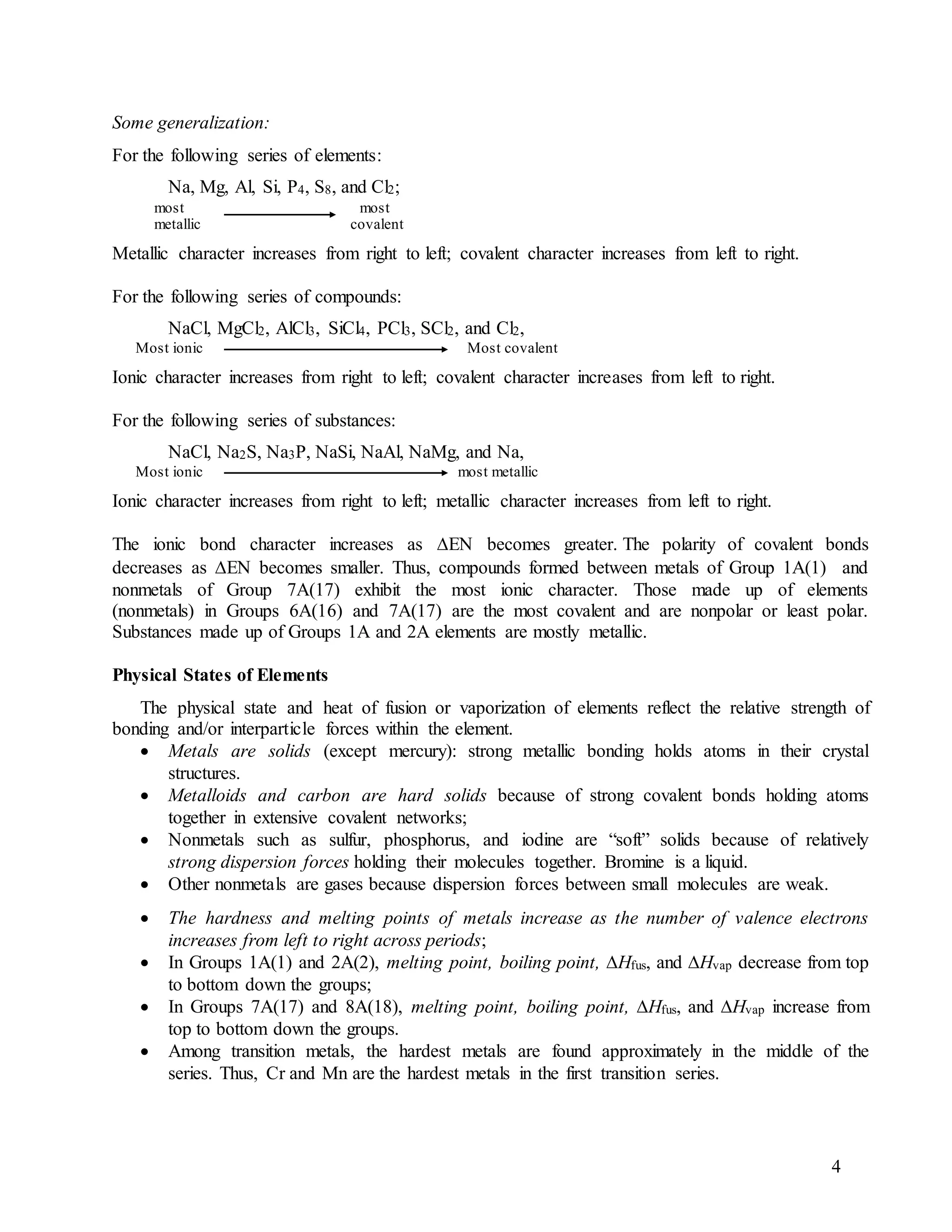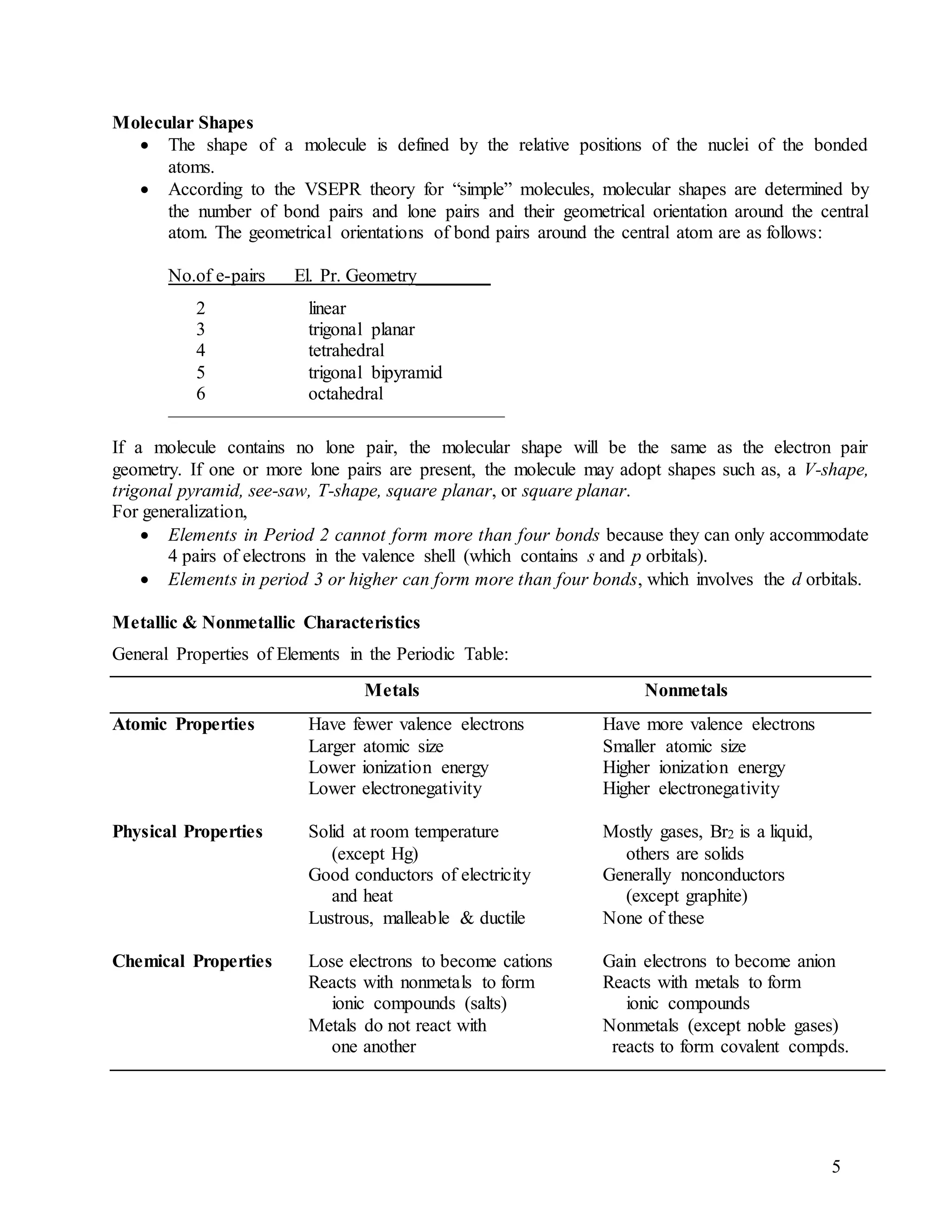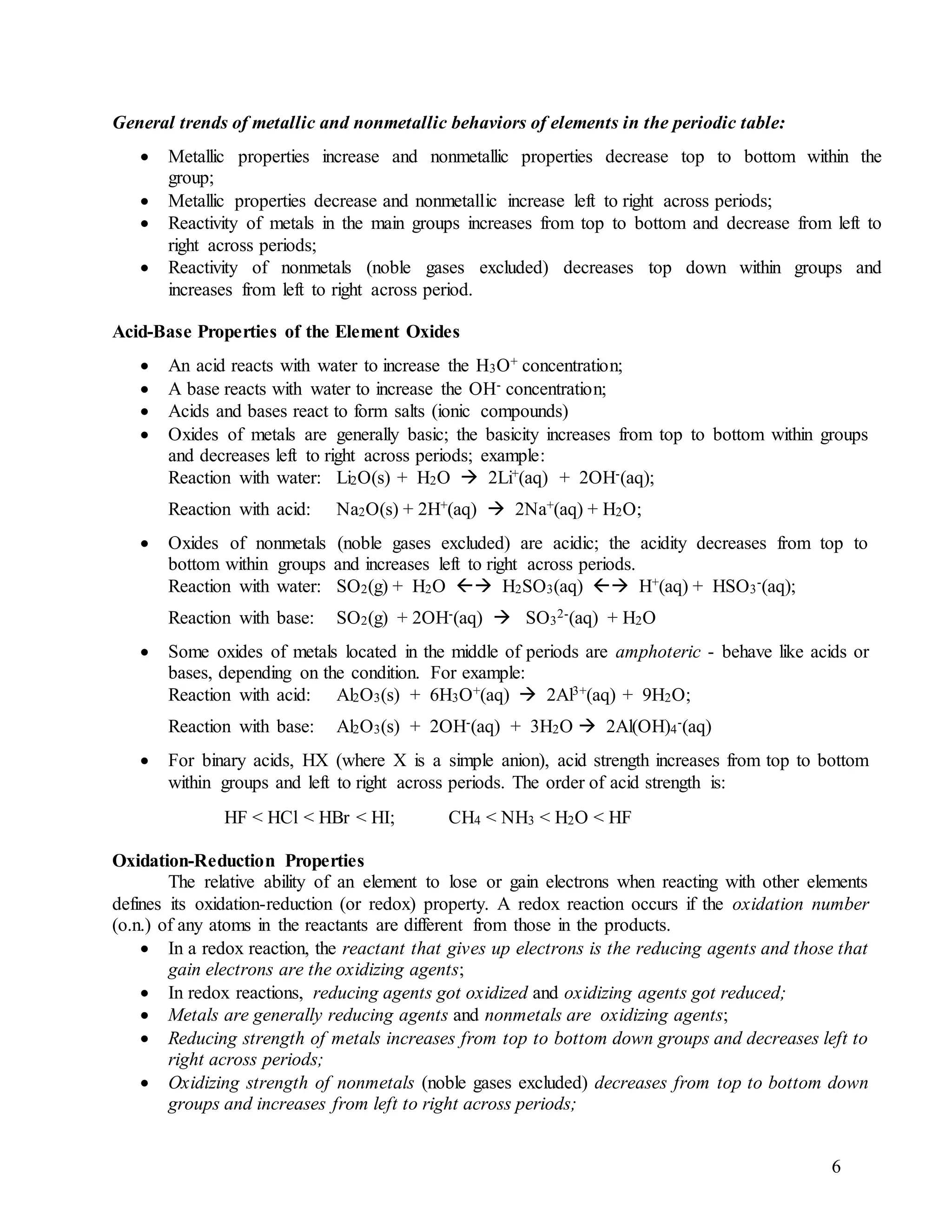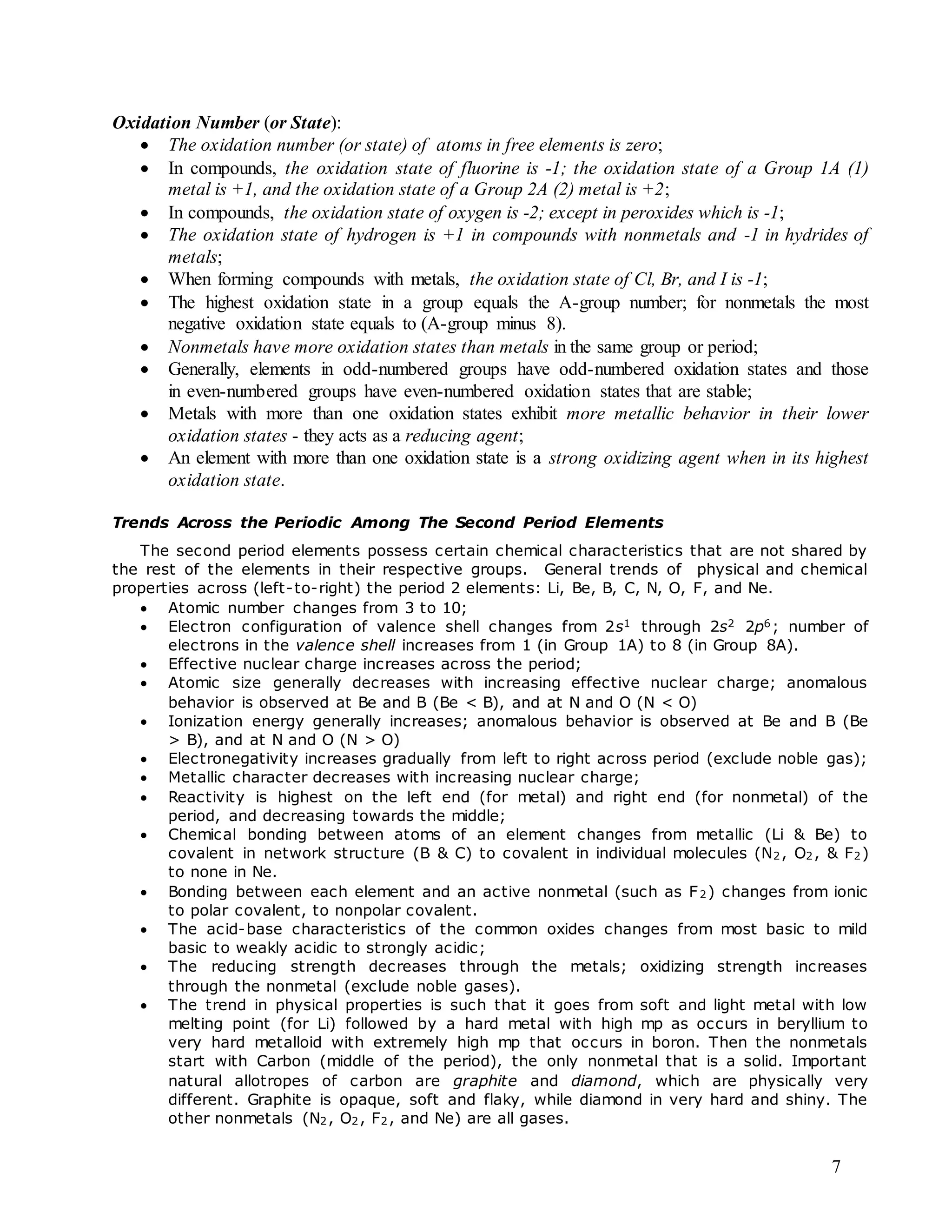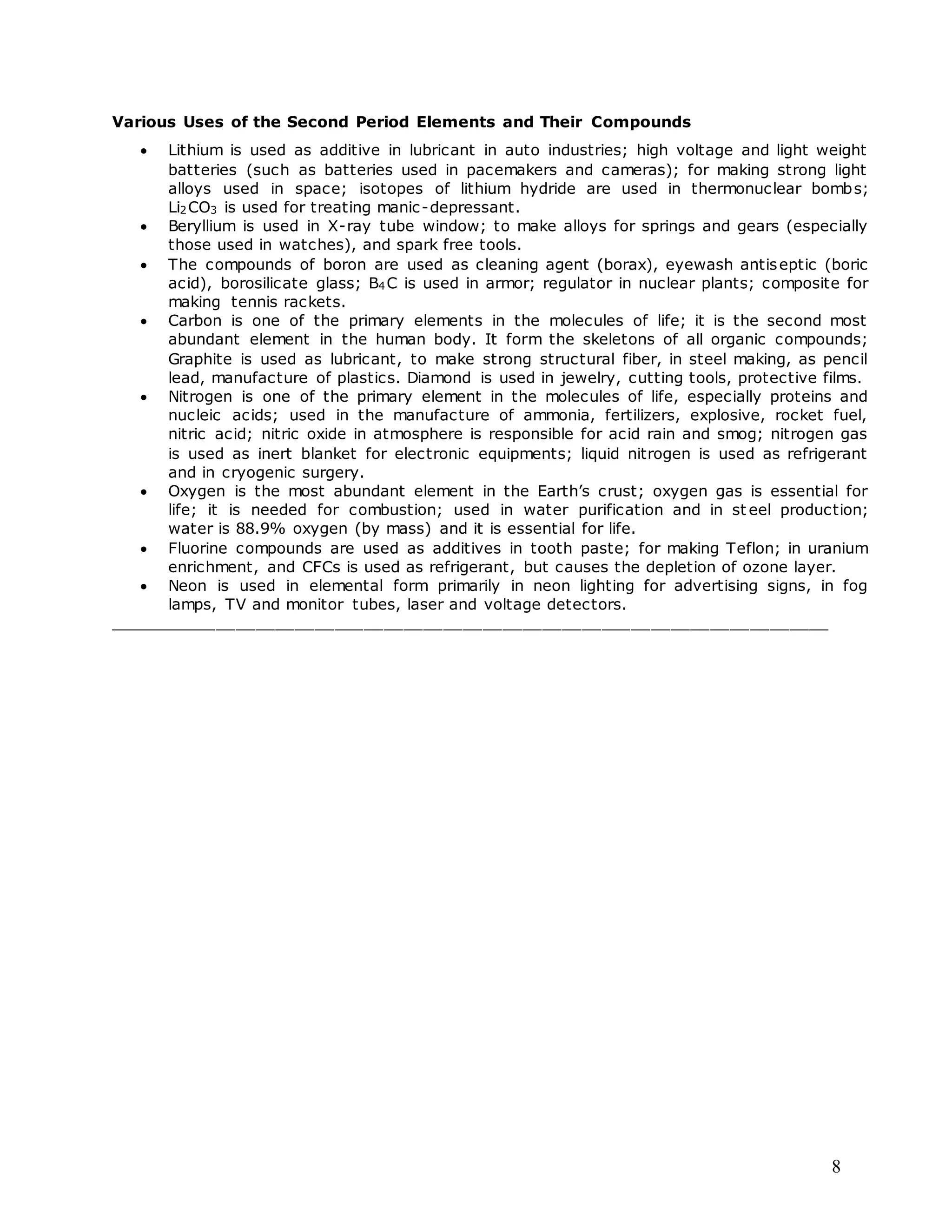This document provides an overview of the key atomic properties of elements in the periodic table, including electron configuration, atomic size, ionization energy, electron affinity, and electronegativity. It discusses trends in these properties across periods and down groups in the table. It also summarizes bonding types (ionic, covalent, metallic), factors that influence bond properties, and how physical and chemical properties of elements relate to their location in the periodic table. In general, metallic character increases left to right across periods and down groups, while nonmetallic character shows the opposite trends.
